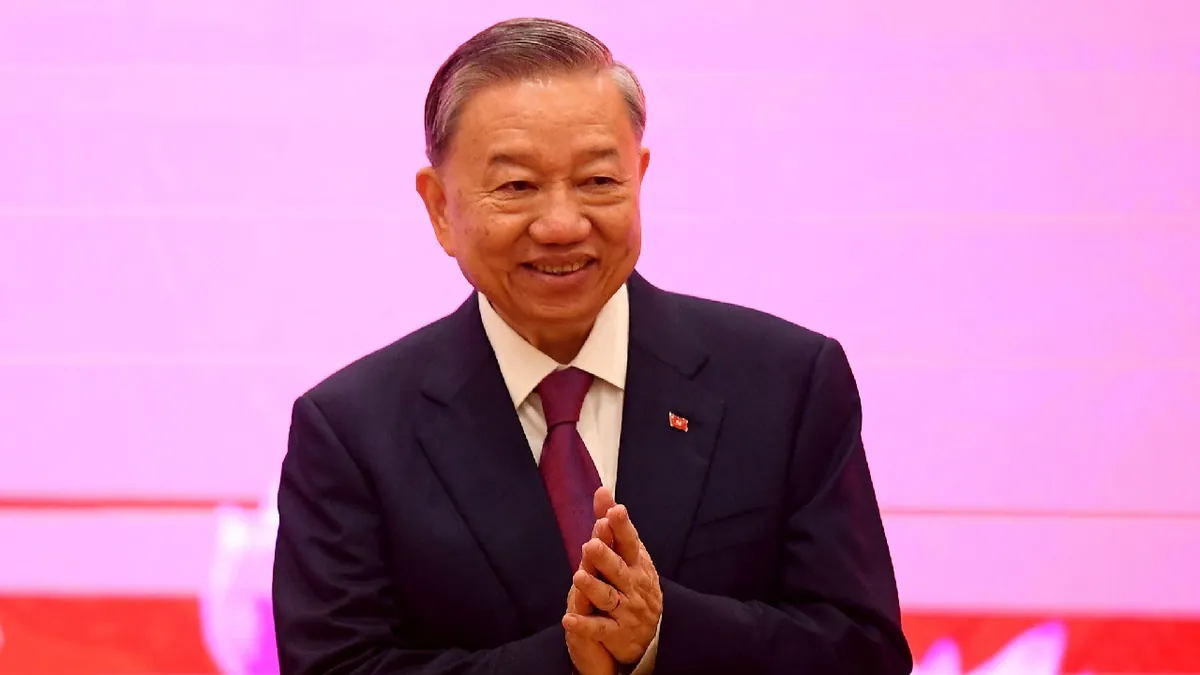Vietnam's newly appointed leader, To Lam, embarked on a significant three-day visit to China on August 20, 2024, marking his inaugural international journey since assuming the country's highest office. This diplomatic engagement underscores the intricate balance Vietnam maintains in its foreign relations.
To Lam's itinerary began in Guangzhou, a major industrial center in southern China. The visit included stops at locations associated with Ho Chi Minh, the iconic Vietnamese communist leader who spent time in the city during the 1920s. This historical connection highlights the long-standing ties between the two nations, despite periods of conflict.
The Vietnamese delegation is scheduled to meet with Xi Jinping, China's leader, and other high-ranking officials. These discussions are expected to cover a range of topics, reflecting the complex nature of Vietnam-China relations.
To Lam assumed the role of general secretary of Vietnam's Communist Party on August 3, 2024, following the passing of his predecessor, Nguyen Phu Trong, on July 19. The Communist Party of Vietnam, founded in 1930, has been the country's sole governing party for decades.
Vietnam's approach to international relations involves a delicate balancing act between China, the United States, and Russia. This strategy, initiated by the previous leadership, is likely to continue under To Lam's guidance. The choice of China for his first overseas visit is seen as a gesture of goodwill, but it does not indicate a shift away from other strategic partnerships.
The relationship between Vietnam and China is multifaceted. While they share ideological similarities as one-party communist states and have strong economic ties, tensions persist, particularly regarding territorial disputes in the South China Sea. This body of water, rich in oil and gas reserves, has been a source of contention among several Southeast Asian nations.
Despite these challenges, economic cooperation between Vietnam and China remains robust. China is Vietnam's largest trading partner, and Chinese manufacturers have increasingly invested in Vietnam, partly to circumvent U.S. trade restrictions. This economic interdependence has contributed to Vietnam's impressive growth, making it one of the fastest-growing economies in Southeast Asia over the past decade.
"The fact that Lam chose China as his first overseas visit destination since taking office is a sign that Vietnam attaches great importance to its relations with China. But at the same time, judging from experience, the country is not by any means going to give the U.S. the cold shoulder."
Vietnam's foreign policy of multilateralism and diversification, initiated with the "Doi Moi" economic reforms in 1986, continues to shape its international engagements. The country joined ASEAN in 1995, the same year it normalized relations with the United States, demonstrating its commitment to regional integration and diverse partnerships.
As To Lam navigates these complex diplomatic waters, he faces the challenge of maintaining Vietnam's sovereignty and economic interests while fostering positive relations with major global powers. This visit to China marks the beginning of a new chapter in Vietnam's foreign policy under its new leadership.
